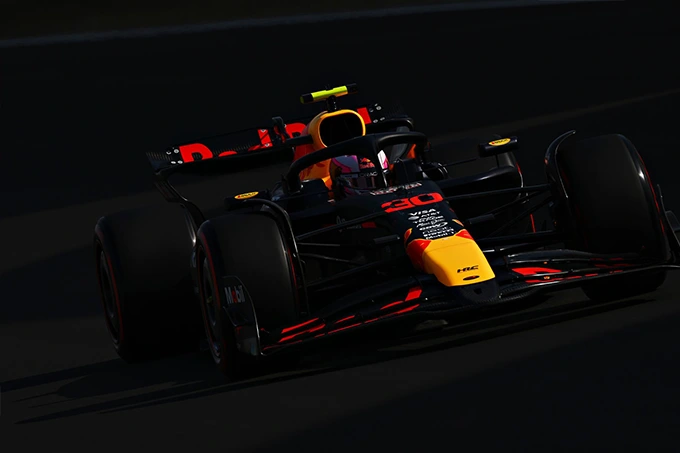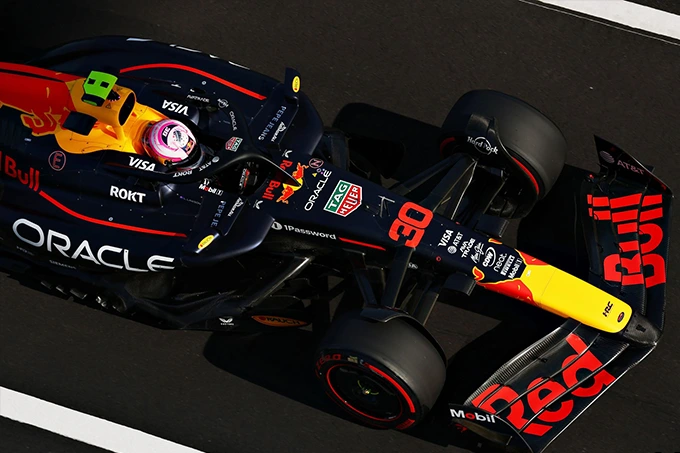Red Bull’s infamous driver merry-go-round continues as Liam Lawson becomes the latest victim of ruthless management tactics shaking Formula One once again.
Red Bull Racing has made yet another controversial and ruthless driver decision, replacing Liam Lawson with Yuki Tsunoda after just two disappointing races. This familiar pattern raises serious questions about how the Milton Keynes outfit manages its second seat, casting doubt on the team’s ability to nurture talent alongside superstar Max Verstappen.
Lawson’s Brief Chance Ends Abruptly
New Zealander Liam Lawson, who joined Red Bull with great fanfare and optimism, described by the team’s management as the most promising candidate from their academy to challenge Max Verstappen, has been dramatically demoted after competing in just two Grands Prix.
Lawson’s opportunity was cut short before the Japanese Grand Prix, with Red Bull swiftly replacing him with Yuki Tsunoda. Tsunoda himself will now leave his current seat at Racing Bulls (previously Toro Rosso) to Lawson. Red Bull expects this situation to remain in place for the remainder of the 2025 season.
After offering Sergio Pérez four seasons in an attempt to compete more closely with Verstappen, Red Bull’s leadership duo—Christian Horner and Helmut Marko—once again took severe action against one of their own promoted drivers, despite Lawson having only completed 11 races over two partial seasons in their junior team.
A Familiar Pattern at Red Bull
This latest move echoes previous decisions made by Red Bull’s leadership, notably involving drivers Daniil Kvyat, Pierre Gasly, and Alex Albon. It once again highlights Red Bull’s troubling approach towards managing the second seat alongside Verstappen, a seat that has become infamous for instability and unpredictability.
Ever since Red Bull acquired Jaguar Racing in 2005, this second-seat dilemma has been prevalent. Even in their debut season, team principal Christian Horner and advisor Helmut Marko began their notorious driver rotation strategy. Austrian driver Christian Klien and Italian Vitantonio Liuzzi alternated the second car alongside experienced driver David Coulthard. Initially planned to be equal rotation, Liuzzi was given just four races before Klien took over permanently for the remainder of the year.
Klien, despite securing the seat fully in 2006, also fell victim to the team’s instability. He was abruptly sacked before the end of that season, replaced by Robert Doornbos for the final three races of the year.
Brief Stability Followed by Vettel Era
Red Bull then enjoyed relative calm in 2007 and 2008 with a stable driver pairing of Coulthard and Mark Webber. This stability carried forward through Sebastian Vettel’s successful tenure from 2009 alongside Webber, and later Daniel Ricciardo. Though tensions occasionally surfaced—particularly between Vettel and Webber—the second seat generally remained competitive and consistent.
However, by 2015, this stability evaporated once again. Daniil Kvyat initially showed great promise, even outperforming Ricciardo in his first full season at Red Bull. Yet, after a single incident at the 2016 Russian Grand Prix—used as justification rather than the cause—he was swiftly demoted back to Toro Rosso, paving the way for young Max Verstappen.
Gasly and Albon: Victims of Excessive Pressure
With Verstappen increasingly central to Red Bull’s plans, the second seat quickly became a pressure cooker. Pierre Gasly, promoted after strong performances with Toro Rosso, faced immediate criticism following minor mistakes during winter testing in 2019. Helmut Marko regularly referenced these incidents to justify doubts about Gasly’s capabilities, creating immense psychological pressure.
Despite public assurances from Christian Horner that Gasly’s seat was secure, the Frenchman was abruptly replaced mid-season after only 12 races, swapped with rookie Alex Albon. Marko openly questioned Gasly’s motivation and overtaking ability, further undermining the young driver’s confidence.
Alex Albon experienced a similar trajectory. Initially praised for impressive performances in late 2019, he soon fell victim to Red Bull’s harsh criticism. Marko himself admitted that the 2020 car, specifically tailored to Verstappen’s aggressive driving style, was unexpectedly challenging, indirectly blaming Honda’s engine power rather than acknowledging internal faults.
Albon’s inconsistent 2020 results led Marko and Horner to again shift blame entirely onto the driver, accusing him publicly of mental fragility and inconsistent speed. Despite two podium finishes, Albon was dropped at the end of the year, completing the familiar cycle of praise, pressure, blame, and dismissal.
Turning to Experience with Sergio Pérez
In a bid to end this damaging cycle, Red Bull chose a more experienced driver in Sergio Pérez for 2021. Initially, Pérez seemed a sensible choice, providing crucial support for Verstappen’s maiden title win, notably battling Lewis Hamilton on several occasions.
However, even Pérez soon fell victim to the Red Bull spiral. After a promising start to the 2023 season, including two early victories, Pérez’s performance collapsed after being decisively beaten by Verstappen at the Miami GP, despite Verstappen starting from ninth place. Pérez’s subsequent drop in form was reminiscent of Gasly and Albon before him.
Despite declining performances, Pérez was extended into 2024 due to internal power struggles between Horner and Marko, rather than performance merit. Predictably, his results failed to improve, leading to the premature termination of his contract early in the season.
Lawson’s Premature Promotion and Swift Demotion
When choosing Pérez’s replacement for 2025, Red Bull controversially promoted Liam Lawson ahead of the more experienced Yuki Tsunoda. Horner and Marko argued Lawson was mentally tougher and more consistent. Yet critics questioned the logic, noting Lawson had not convincingly beaten Tsunoda in head-to-head battles.
Red Bull promised a car that would suit both Verstappen and the inexperienced Lawson. But the reality quickly proved harsh. Lawson’s first two races in Australia and China were disastrous, eliminated in Q1 at both events and failing to score points. Helmut Marko immediately threatened Lawson’s seat before even the third race could be held, openly declaring the young driver would receive “no special protection.”
Internal Pressure and Red Bull’s Real Motives
This ruthless approach raises questions about Red Bull’s internal dynamics. Legendary designer Adrian Newey recently departed, and the new RB21 car failed to match expectations, relegating Red Bull to third or fourth-best on the grid. In such a context, management decisions appear driven by internal politics and pressure from corporate owners at Red Bull GmbH rather than thoughtful driver development.
Horner and Marko appear desperate to project strength and decisiveness, repeatedly scapegoating drivers rather than addressing deeper structural issues. Lawson, unfortunately, became another convenient scapegoat to deflect blame from the team’s internal struggles.
Tsunoda Faces a Familiar Threat
Now that Yuki Tsunoda returns to the main team, there’s a very real chance he will experience a similar fate. Before the season even started, Horner admitted Tsunoda was retained as a fallback option precisely because they expected Lawson might struggle. Rather than learning from previous mistakes, Red Bull again risks repeating them.
Should Tsunoda fail to match Verstappen, history indicates he too will be publicly criticized, labeled inconsistent or mentally weak, and ultimately discarded. The cycle continues relentlessly, with Red Bull’s management repeatedly refusing to acknowledge their role in creating an environment almost impossible for young drivers to thrive.
A Damaging Legacy
Red Bull’s constant churn of young talent creates a damaging legacy. Klien, Liuzzi, Doornbos, Kvyat, Gasly, Albon, Pérez, and now Lawson—all suffered from Red Bull’s impatience, unrealistic expectations, and scapegoating tactics. Talented careers have been disrupted or derailed entirely, leaving a trail of lost potential in Formula One’s most competitive era.
As Red Bull struggles internally following Newey’s departure, increasing corporate pressure, and diminishing car performance, their ruthless management of the second seat is likely to continue until the fundamental approach changes.
A Call for Reflection
Red Bull Racing has repeatedly failed to reflect on its problematic approach. Until the team acknowledges its internal failings and toxic pressure placed on young drivers, the second seat at Milton Keynes will remain one of the toughest, most uncertain positions in Formula One.
Lawson’s premature demotion is not just another isolated incident—it represents a deeply rooted management issue that Red Bull urgently needs to address. If not, Yuki Tsunoda risks becoming the next victim in an ongoing saga of wasted talent and repeated mistakes at one of the sport’s most prominent teams.

- Discover More>Villeneuve Slams Lawson: “Arrogance Cost Him His Seat at Red Bull”
- Follow us on >Facebook and >Twitter for F1 updates
Red Bull’s Second Seat Saga: Lawson Latest Casualty Red Bull’s Second Seat Saga: Lawson Latest Casualty. f1 2025 Red Bull’s Second Seat Saga: Lawson Latest Casualty. formula 1 Red Bull’s Second Seat Saga: Lawson Latest Casualty
